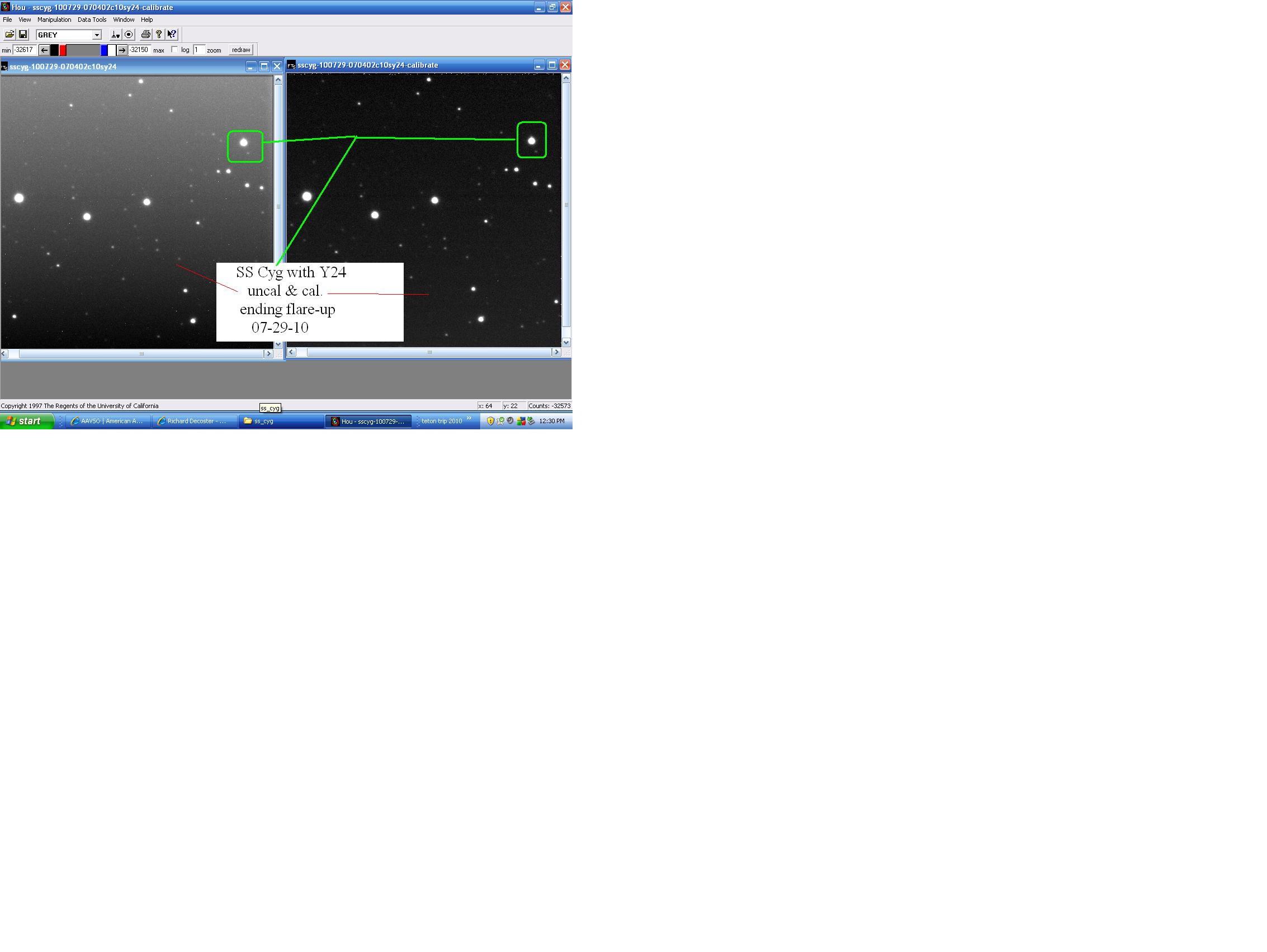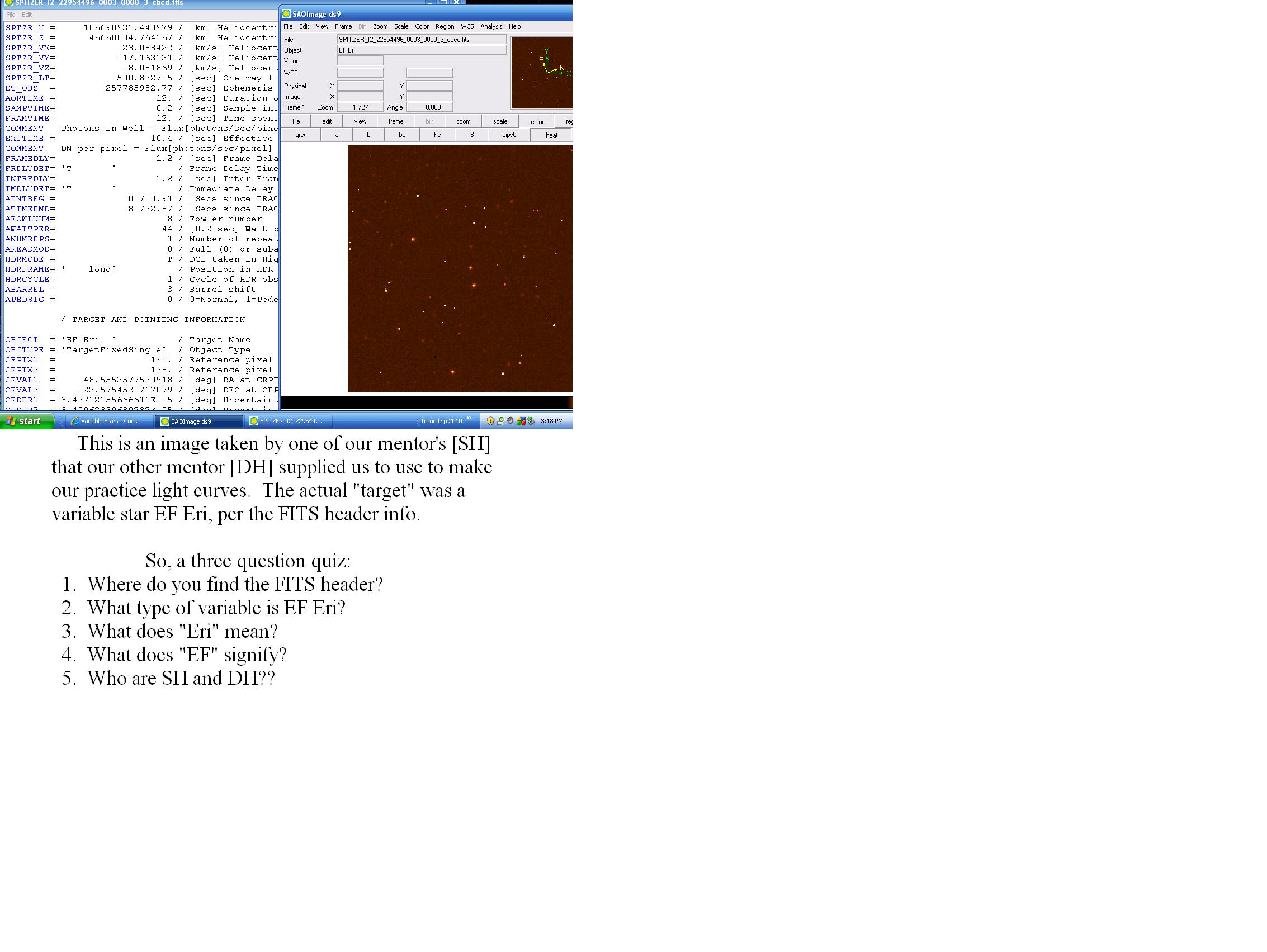Variable Stars
I already had this on my page, but here's the link to make it more easily accessible. Yes, I know it's Wikipedia, but the information is pretty legitimate. And it is a bit long, but even a scan through can get some good points.
Variable Stars on Wikipedia
The main points I got out of this are:
- Variable stars are classified as either intrinsic or extrinsic. Intrinsic is when the star itself is pulsating or having some sort of eruptions, causing the change in brightness. Extrinsic is when the star's brightness is blocked by another orbiting star.
- Specifically, I think the ones we've been studying are considered cepheids, or variable stars with shorter periods like days or months and their variation isn't very varying (say that five times fast! The site calls their luminosities "regular.")
- Helium is the main cause of cepheids' fluctuations. Ionization, to be exact; gotta love chemistry.
--Joey Romero 19:12, 24 July 2010 (PDT)
You Rock Joey! So if we are looking fore these rapidly varying stars in this study, why might it be useful to look at these in the infrared range? Mr DeCoster is a variable star groupie, so I hope he chimes in here! Don't forget the link that someone posted on the previous page http://aavso.org/vstar/ that has lots more info. --Peggy Piper 20:08, 25 July 2010 (PDT)
AAVSO recently greatly modified [?improved] its web page. I am still trying to recoup.
- We took some pictures at Yerkes last night of one of the more famous variable stars SS Cygni. I'll try to post one such picture.
- Also, I started a page a bit ago of the Niles West sub-group's effort to observe longer period variables such as Mira-type and Cepheid-type, the latter that Joey alluded to. The Mid-IR group, i.e. us, is looking for variables with even shorter periods, on the order of which we can observe with our several hours long data sets. See "Mr. DeCoster's LPV Material" under one of our sub-headings.
--Richard DeCoster 12:56, 29 July 2010 (PDT)
So... SS Cyg varies over the course of weeks? I've got some images of Cygnus from the past two weeks up a yerkes and I think I have some from the grand canyone, that would be first two weeks in June. Should I actually see variation? --Peggy Piper 13:51, 29 July 2010 (PDT)
The paint thing - I think we found that you had to crop to exactly what you wanted included in your image to get rid of all that white. Rebecca is that right?--Peggy Piper 13:55, 29 July 2010 (PDT)
Concerning SS Cyg: SS Cyg varies erratically. It never gets naked eye visible-I have a couple of images with my Kodak when it got to its brightest. So I doubt that it will be in the pictures you mention. If SkyNet had northern hemisphere coverage it would be fun to watch SS Cyg. Vivian Hoette certainly has followed this variable extensively. It is a perfect project for using the Yerkes rooftop. But everything takes time and we already have our plates full.--Richard DeCoster 20:48, 30 July 2010 (PDT)
Concerning the PAINT thing: Thanks for your response and please elaborate. It used to be that when I did copy/paste into paint I got a nice sized image. I still do at school. But about 4 months ago I opened a file I obtained elsewhere and my PAINT "default" got reset and I can't figure out how to go back to my useful settings.--Richard DeCoster 20:52, 30 July 2010 (PDT)


